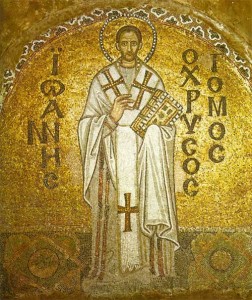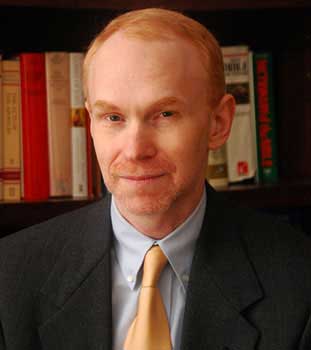Dr. Matthew Bunson discusses the life, times and teachings of St. John Chrysostom pt 1
Podcast: Play in new window | Download (Duration: 30:36 — 21.0MB) | Embed
Subscribe: Apple Podcasts | Spotify | Amazon Music | Android | Pandora | iHeartRadio | JioSaavn | Podchaser | Gaana | Podcast Index | Email | TuneIn | Deezer | Anghami | RSS | More
-
Born: 347 AD, Antioch, Turkey
-
Died: September 14, 407 AD, Comana Pontica
– Homilies on the Gospel of St. Matthew
– Homilies on Acts
– Homilies on Romans
– Homilies on First Corinthians
– Homilies on Second Corinthians
– Homilies on Ephesians
– Homilies on Philippians
– Homilies on Colossians
– Homilies on First Thessalonians
– Homilies on Second Thessalonians
– Homilies on First Timothy
– Homilies on Second Timothy
– Homilies on Titus
– Homilies on Philemon
– Commentary on Galatians
– Homilies on the Gospel of John
– Homilies on the Epistle to the Hebrews
– Homilies on the Statues
– No One Can Harm the Man Who Does Not Injure Himself
– Two Letters to Theodore After His Fall
– Letter to a Young Widow
– Homily on St. Ignatius
– Homily on St. Babylas
– Homily Concerning “Lowliness of Mind”
– Instructions to Catechumens
– Three Homilies on the Power of Satan
– Homily on the Passage “Father, if it be possible . . .”
– Homily on the Paralytic Lowered Through the Roof
– Homily on the Passage “If your enemy hunger, feed him.”
– Homily Against Publishing the Errors of the Brethren
– First Homily on Eutropius
– Second Homily on Eutropius (After His Captivity)
– Four Letters to Olympias
– Letter to Some Priests of Antioch
– Correspondence with Pope Innocent I
– On the Priesthood
From Vatican.va, an excerpt from the teachings of Pope Benedict XVI General Audience 2009 
Dear Brothers and Sisters,
This year is the 16th centenary of St John Chrysostom’s death (407-2007). It can be said that John of Antioch, nicknamed “Chrysostom”, that is, “golden-mouthed”, because of his eloquence, is also still alive today because of his works. An anonymous copyist left in writing that “they cross the whole globe like flashes of lightening”.
Chrysostom’s writings also enable us, as they did the faithful of his time whom his frequent exiles deprived of his presence, to live with his books, despite his absence. This is what he himself suggested in a letter when he was in exile (To Olympias, Letter 8, 45).
He was born in about the year 349 A.D. in Antioch, Syria (today Antakya in Southern Turkey). He carried out his priestly ministry there for about 11 years, until 397, when, appointed Bishop of Constantinople, he exercised his episcopal ministry in the capital of the Empire prior to his two exiles, which succeeded one close upon the other – in 403 and 407. Let us limit ourselves today to examining the years Chrysostom spent in Antioch.
He lost his father at a tender age and lived with Anthusa, his mother, who instilled in him exquisite human sensitivity and a deep Christian faith.
After completing his elementary and advanced studies crowned by courses in philosophy and rhetoric, he had as his teacher, Libanius, a pagan and the most famous rhetorician of that time. At his school John became the greatest orator of late Greek antiquity.
He was baptized in 368 and trained for the ecclesiastical life by Bishop Meletius, who instituted him as lector in 371. This event marked Chrysostom’s official entry into the ecclesiastical cursus. From 367 to 372, he attended the Asceterius, a sort of seminary in Antioch, together with a group of young men, some of whom later became Bishops, under the guidance of the exegete Diodore of Tarsus, who initiated John into the literal and grammatical exegesis characteristic of Antiochean tradition.
He then withdrew for four years to the hermits on the neighbouring Mount Silpius. He extended his retreat for a further two years, living alone in a cave under the guidance of an “old hermit”. In that period, he dedicated himself unreservedly to meditating on “the laws of Christ”, the Gospels and especially the Letters of Paul. Having fallen ill, he found it impossible to care for himself unaided, and therefore had to return to the Christian community in Antioch (cf. Palladius, Dialogue on the Life of St John Chrysostom, 5).
For more visit Vatican.va
Dr. Matthew Bunson, Senior Fellow of the St. Paul Center for Biblical Theology, is one of the United States’ leading authorities on the papacy and the Church.
His books include: The Encyclopedia of Catholic History; The Encyclopedia of Saints; Papal Wisdom; All Shall Be Well; Encyclopedia of the Roman Empire; and The Angelic Doctor: The Life and World of St. Thomas Aquinas; The Pope Encyclopedia; We Have a Pope! Benedict XVI, the first Catholic biography of the Holy Father in the English language; the Encyclopedia of U.S. Catholic History; Pope Francis. His also the editor of OSV’s “The Catholic Answer” magazine.


